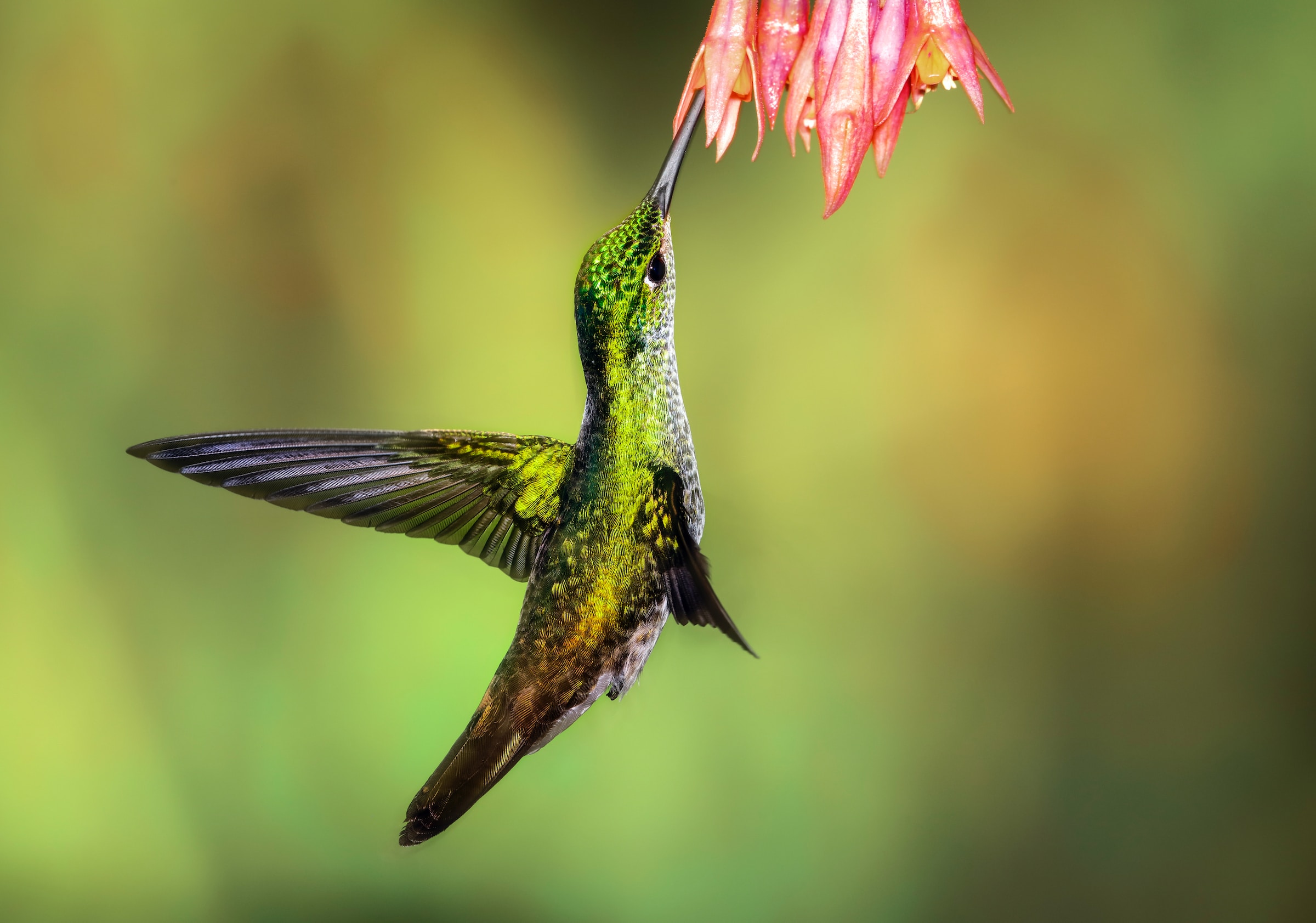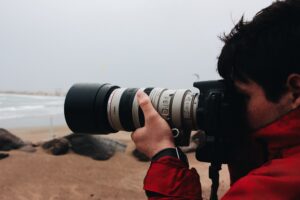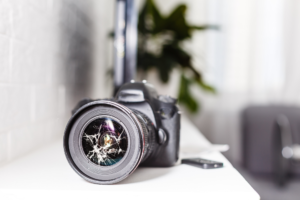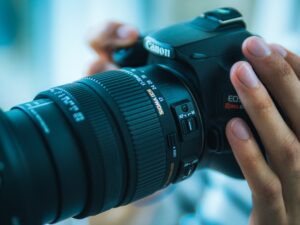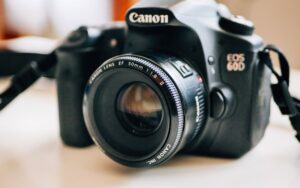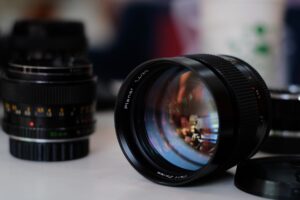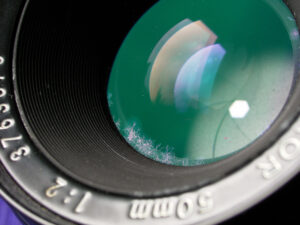What makes a lens good for bokeh? The answer lies in its aperture, the type of lens, and the construction of its aperture blades.
In this comprehensive guide, we’ll delve into the fascinating world of bokeh photography. From understanding what bokeh is to how you can achieve it with the right lens, this article is your one-stop resource.
So, if you’re a beginner looking to capture those dreamy, blurred backgrounds, keep reading!
Key Information Summary
| Criteria | Details |
|---|---|
| Ideal Aperture | Wide apertures like f/1.4 or f/1.8 are ideal for bokeh. |
| Best Lens Type | Prime lenses are generally better for bokeh than zoom lenses. |
| Aperture Blades | More and circular-shaped aperture blades produce rounder, softer bokeh. |
| Focal Length | Longer focal lengths yield more visible bokeh effects. |
| Practical Tips | Use wide aperture settings, maintain distance between subject and background, and consider lighting. |
| Unique Lenses | Lensbaby, Voigtlander 35mm f1.4 MC, and others offer unique bokeh characteristics. |
| Common FAQs | Ideal lens types, aperture settings, and the role of focal length are frequently asked questions. |
What is Bokeh?
Definition and Meaning of Bokeh
Bokeh is a term derived from the Japanese word “boke,” which means “blur” or “haze.”
In the context of photography, bokeh refers to the aesthetic quality of the out-of-focus areas in an image.
It’s not just about blurriness; it’s about how smoothly and pleasingly the background blends, creating a harmonious backdrop that complements the in-focus subject.
The Aesthetic Quality of Bokeh in Photography
The aesthetic quality of bokeh is often described in terms such as smooth, creamy, or buttery.
Good bokeh enhances the subject, drawing your eye to it, while bad bokeh can be distracting.
Here are some factors that contribute to the aesthetic quality of bokeh:
- Smoothness: A smooth, uninterrupted blur that doesn’t distract from the subject.
- Color: The absence of harsh color fringing around the blur.
- Shape: The form of the out-of-focus highlights, which can be round, hexagonal, or even custom shapes like hearts or stars.
Good vs. Bad Bokeh
Understanding the difference between good and bad bokeh is crucial for anyone diving into bokeh photography.
Here’s a quick comparison:
| Good Bokeh | Bad Bokeh |
|---|---|
| Smooth blur | Harsh, edgy blur |
| Pleasing shapes of out-of-focus highlights | Distracting shapes |
| Enhances the subject | Takes attention away from the subject |
In summary, good bokeh complements your subject and adds a dreamy quality to your photos, while bad bokeh can be jarring and distracting.
The Role of Aperture in Bokeh
How Aperture Size Affects Bokeh
The aperture is the opening in the lens through which light passes to enter the camera body.
The size of the aperture plays a pivotal role in determining the quality of bokeh. A wider aperture (lower f-number) creates a shallower depth of field, leading to more pronounced bokeh effects.
This means that the background and sometimes even the foreground get blurred, making your subject stand out.
The Relationship Between Lens Aperture and Bokeh
The relationship between lens aperture and bokeh is quite direct.
A wider aperture not only allows more light to hit the sensor but also increases the blur in the out-of-focus areas of the image.
Conversely, a smaller aperture (higher f-number) will give you a deeper depth of field, making more of the scene in focus and reducing the bokeh effect.
Ideal Aperture Settings for Achieving Pleasing Bokeh
For those looking to achieve the most pleasing bokeh, apertures of f/2.8, f/2, f/1.8, or even f/1.4 are ideal.
These settings allow for a shallower depth of field, which results in those creamy, blurred backgrounds that photographers love.
Quick Tip: Experiment with different aperture settings to find what works best for your style of photography. The ideal setting can vary depending on your subject and lighting conditions.
Lens Types and Their Bokeh Effects
Prime vs. Zoom Lenses: Which is Better for Bokeh?
When it comes to bokeh, prime lenses generally outperform zoom lenses.
The reason is simple: prime lenses often have wider maximum apertures, which as we’ve learned, is crucial for achieving good bokeh.
Zoom lenses are more versatile but usually have smaller maximum apertures, making it harder to achieve that dreamy background blur.
Want to learn more about the differences between prime and zoom lenses? Check out our in-depth guide, Zoom Lenses vs. Prime Lenses.
The Role of Focal Length in Bokeh
The focal length of a lens also influences the bokeh effect.
Longer focal lengths, like those found in telephoto lenses, tend to produce more visible bokeh. This is because they naturally have a shallower depth of field compared to wide-angle lenses.
Portrait and Telephoto Lenses for Better Bokeh
Portrait and telephoto lenses are often the go-to choices for photographers aiming for excellent bokeh.
These lenses usually have large maximum apertures and longer focal lengths, both of which contribute to a shallower depth of field and, consequently, more pleasing bokeh.
The Anatomy of Aperture Blades
How the Shape of Aperture Blades Affects Bokeh
The shape of the aperture blades in a lens plays a significant role in determining the quality and appearance of bokeh. Lenses with more circular-shaped blades produce rounder, softer orbs of out-of-focus highlights.
On the other hand, lenses with non-circular aperture blades can result in bokeh that has more polygonal shapes, which may be less pleasing to the eye.
How the Number of Aperture Blades Influences Bokeh
The number of blades in the aperture also has a significant impact.
Generally, more blades lead to a more circular aperture, which in turn produces smoother, more pleasing bokeh. Fewer blades often result in a more polygonal shape, giving the bokeh a less pleasing appearance.
Most photographers agree that 9 blades are about perfect, but it’s largely a matter of personal preference.
How Camera Lenses Are Made – For a deeper dive into the construction of lenses, check out this guide.
Common Shapes of Aperture Blades and Their Effects
Here are some common shapes of aperture blades and how they affect bokeh:
- Circular: Produces round, pleasing bokeh.
- Polygonal: Leads to more geometric shapes, which can be distracting.
- Ninja Star-Shaped: Found in some older lenses, produces a unique but often distracting bokeh.
- Curved: Produces a more circular and generally more pleasing bokeh.
Practical Tips for Achieving Perfect Bokeh
Camera Settings for Achieving Good Bokeh
Achieving the perfect bokeh involves more than just the lens and aperture settings.
Here are some camera settings to consider:
- Aperture: Use a wide aperture (low f-number) for a shallower depth of field.
- Shutter Speed: A faster shutter speed can help freeze the subject, making the bokeh more pronounced.
- ISO: Keep it low to avoid noise, which can distract from the bokeh.
Distance Between Subject and Background
The distance between your subject and the background also affects the bokeh. A greater distance will result in a more blurred background, enhancing the bokeh effect.
Lighting Conditions for Optimal Bokeh
Good lighting is crucial for achieving great bokeh.
Soft, diffused lighting conditions are generally best. Avoid harsh light that can create distracting shadows and highlights.
How Do You Clean a Camera Lens – Keeping your lens clean is essential for capturing clear, sharp images that make your bokeh stand out.
Unique Bokeh Characteristics Across Different Lenses
Lensbaby Lenses
Lensbaby lenses offer a unique approach to bokeh and selective focus.
These lenses are designed with a flexible body that allows you to bend and twist the lens, thereby altering the plane of focus.
This results in a localized area of sharpness surrounded by a dreamy, ethereal blur. It’s a perfect choice for creative portraits and abstract photography.
Voigtlander 35mm f1.4 MC
The Voigtlander 35mm f1.4 MC is a classic lens known for its swirly bokeh effect.
The lens’s optical design creates a vortex-like pattern in the out-of-focus areas, adding an artistic and vintage feel to your photos.
This lens is particularly popular among street photographers and portrait artists who want to add a unique touch to their work.
Other Notable Lenses
- Helios 50mm and 58mm: These vintage lenses are famous for their swirly bokeh, adding a retro charm to modern photography.
- Olympus OM 55mm f1.2: This lens is known for its ultra-smooth and creamy bokeh, making it ideal for portrait photography.
- Nikon AF-S NIKKOR 105mm f/1.4E ED Lens: This lens offers a beautiful, rounded bokeh along with exceptional sharpness, making it a top choice for professional portrait photographers.
- Canon EF 85mm f/1.2L II USM: With its large aperture, this lens produces a bokeh that is both creamy and dreamy, perfect for isolating subjects against a soft background.
Should I Buy Used Camera Lenses? – Considering the cost of some of these specialized lenses, you might wonder if buying used is a good idea. Check out this comprehensive guide to make an informed decision.
FAQs
What’s the Ideal Lens for Achieving Bokeh?
The best lens for bokeh typically has a wide maximum aperture, such as f/1.4 or f/1.8. Prime lenses are generally better for bokeh than zoom lenses.
Is a 50mm Lens Suitable for Creating Bokeh?
Yes, a 50mm lens with a wide aperture like f/1.8 or f/1.4 is excellent for creating bokeh, especially in portrait photography.
Which Lens Should I Choose for a Blurred Background?
For a blurred background, consider lenses with a wide aperture and longer focal length. Prime lenses, especially those with apertures like f/1.4 or f/1.8, are ideal.
How Can I Produce a Bokeh Effect Using My Camera?
To create a bokeh effect, use a wide aperture setting, focus on your subject, and maintain a reasonable distance between the subject and the background.
How to Achieve Quality Bokeh with a 50mm Lens?
For quality bokeh with a 50mm lens, use the widest aperture setting, usually f/1.8 or f/1.4, and focus closely on your subject.
Does the Focal Length Influence the Bokeh?
Yes, longer focal lengths tend to produce more pronounced bokeh effects. Telephoto lenses with wide apertures are particularly good for this.
Conclusion
Bokeh is not just a trendy photography term; it’s an artistic element that can significantly impact the mood and composition of your photos.
From understanding the intricacies of aperture settings to choosing the right lens for your creative vision, achieving the perfect bokeh requires a blend of technical knowledge and artistic intuition.
Don’t be afraid to try different lenses, aperture settings, and distances to discover what kind of bokeh resonates with your artistic style.


